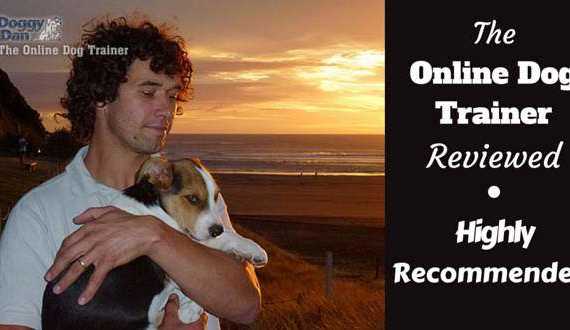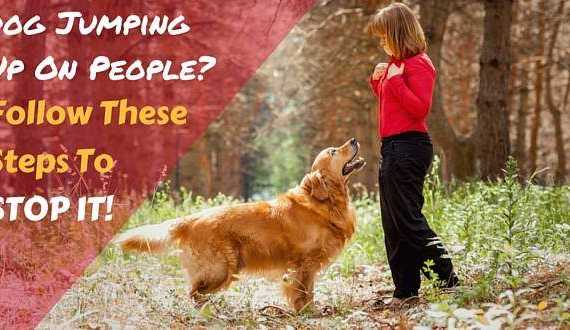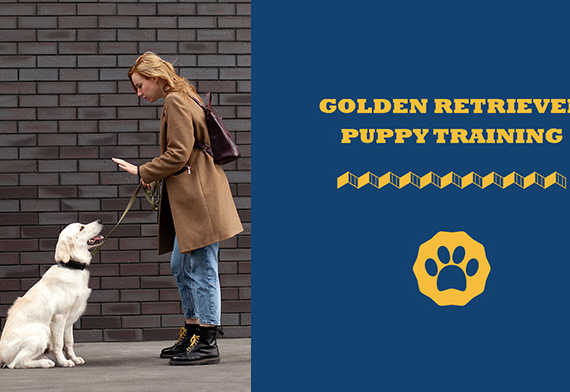Updated: July 10th, 2022
This article contains affiliate links. Read the full disclosure here.
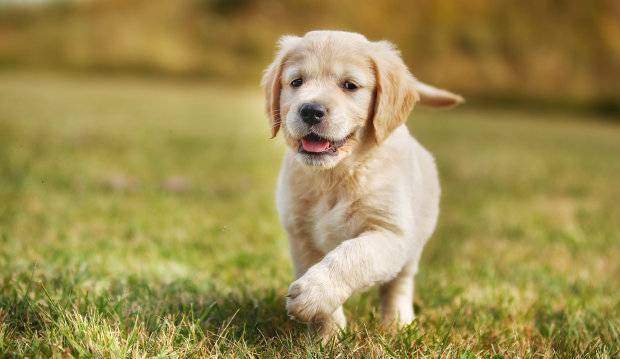
In a recent article I discussed the many benefits using a dog crate offers, and in another I detailed the many reasons why using a dog crate isn’t cruel.
But a crate is only beneficial and in no way cruel if you use it at the right times for the right reasons.
Because a crate can be used incorrectly, at the wrong times and in inhumane ways, it pays to know how and when to use it correctly.
With that in mind, I thought I’d expand on my earlier articles to describe how to use a dog crate, when you can and should crate your dog and the times you definitely should not.
With a lot to cover I’m splitting this into two articles, starting with this one and I’ll link to an article on when you shouldn’t crate your dog when it’s written in a week or so time.
Prepare The Crate For Your Golden Retriever
I have an article dedicated to this subject you can read by clicking here, but as a summary, here are the basics of preparing a crate for your Golden.
You need to buy a crate of the correct size and make it a nice, comfortable and fun place for your dog to spend time.
It must be large enough for them to stretch out laying down, turn around easily and stand without hitting their head. But it shouldn’t be much bigger than this or it loses the den like feeling that dogs crave and if too large there’s a danger they could use one end as a bedroom and the other end as a toilet.
You want to provide some nice comfortable bedding and leave 2 or 3 chew toys in there to give them something to do, particularly when teething.
Additionally you should place the crate in a busy room of your home where the family spends time so your dog isn’t isolated and you should place it away from any sources of direct heat and out of the way of any cold drafts.
Finally, make sure you remove your dogs leash and collar before they go into the crate as they can get caught and cause choking.
Keep The Following In Mind Before Using A Crate
As well as making the crate a comfortable and fun place to spend time, there are some other important things you should do to increase their enjoyment of the crate and make time spent there as positive an experience as possible:
Always Exercise And Take Your golden To Toilet Before Crating
Golden Retrievers are a high energy breed and need lots of exercise and mental stimulation to be happy in life. Being locked in a crate does take away opportunity for them to roam, explore and occupy their mind so it’s a very good idea to exercise them before asking them into their crate.
By exercising them you make sure they have no pent-up energy, have recently enjoyed some mental stimulation, enjoyed some social interaction and help prevent feelings of isolation, loneliness and boredom building up when in the crate.
In fact if exercised enough, a dog will look forward to the peaceful rest they can enjoy in a crate.
You should also make sure your Golden’s had a chance to empty their bladder and bowel before you ask them into a crate. Holding it for hours is extremely uncomfortable and the last thing you want is for them to relieve themselves in there. This would of course be a disaster, but also very unfair on your dog.
Avoid Teaching Your Golden That The Crate Means Being Abandoned
Golden Retrievers are an extremely social breed and would love nothing more than to spend all day every day with their family.
If you only ever ask your Golden to their crate right before you’re about to leave the home for a few hours, they will very quickly learn that the crate means they’re about to be left alone.
Of course, most Goldens won’t like this and it can very quickly cause them to start disliking the crate and not wanting to use it.
To avoid this you should crate them at other times too, sometimes for just a few minutes, other times for an hour or two, without you ever leaving your home.
Your aim is to create and maintain a positive association with the crate and avoid planting the idea in their mind it means they’re going to be left alone.
The Crate Is Your Dogs Own Special Place And For Nobody Else
For your Golden to see their crate as a quiet little space they can call their own, it must be just that – Their own!
If you have a multi-pet household or small children, it’s best if you keep them out of the crate.
No cats, children, rabbits or anything else should be allowed to venture in there. It’s their space that they own, they shouldn’t have to share it and they shouldn’t expect to find another animal in there.
An exception could be if you have 2 (or more) dogs. Sometimes they enjoy heading into a crate together and if they don’t, they will have their own way of communicating this and sorting it out themselves. You will soon know!
So you can leave the door open and if two dogs wander in, so be it. But you should never actually lock 2 dogs in one crate. Use a ‘one-dog-per-crate’ rule, and keep all other animals and children out of there completely.
Allow Your Golden To Use The Crate Any Time They Wish
One of the ultimate aims of using a crate is to have a place your dog can call their own, where they know they can get away from things and chill out undisturbed.
This is very important and your dog will highly appreciate it, especially in a house with multiple pets or small children. But this can only happen if the door to the crate is always open and your Golden has access to and free use of the crate when they wish.
So make sure this is possible!
When Should You Crate Your Dog?
Let’s now cover the times when you should crate your Golden, the times it benefits either your or dog, but ultimately only ever with your dogs best interests at heart.
To Keep Them Safe If You Cannot Watch Them
A young puppy can get into all sorts of trouble if left alone unsupervised. No matter how good a job you’ve done puppy-proofing your home, there will always be some danger present for inquisitive paws and teeth.
Chewing electrical wiring, chewing off pieces of furniture or flooring and swallowing it causing choking hazards and much more besides.
So if you cannot watch your puppy while you clean your bedrooms or deal with a visitor, pop them into their crate with a chew toy and you know they’ll always be safe.
To Keep Your Belongings Safe From Inquisitive Paws And Teeth
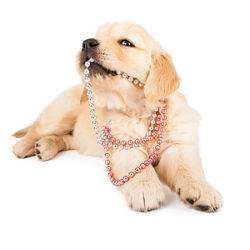 As stated in the last point, if you aren’t watching your puppy there’s a lot of trouble they can get into with their little paws and teeth.
As stated in the last point, if you aren’t watching your puppy there’s a lot of trouble they can get into with their little paws and teeth.
But not only is this dangerous for them, it can be very expensive for you!
Over the decades I’ve had table and chair legs chewed, sofa upholstery destroyed, cushions ruined, shoes chewed, a TV remote chewed, the list goes on and on.
I do a pretty good job of puppy proofing my home and a good job of supervising or crating my puppies, but as you can see I’ve let my guard slip more than once!
So the recommendation is, if you cannot supervise your puppy, you can protect your belongings by popping them in a crate.
An investment in a crate of as little as $75 can potentially save you thousands. Not to mention if they get their little mouths on something of sentimental value that can never be replaced.
If You Have To Leave Them Home Alone
A puppy shouldn’t have free roam of your home if you have to pop out and leave them alone.
If you’re going to be out for hours, I recommend confining them to an x-pen or a small room with baby gates, but for times of just a few minutes up to 2 or 3 hours you should pop your puppy in the crate. You can consider installing a pet camera to monitor your pooch when you’re not around and learn their behavior patterns.
If free to roam your whole house, some dogs get anxious and worried feeling that they have to protect this big open space and they end up getting stressed. Popping them in a crate removes this anxiety.
It also guarantees you won’t come home to any damaged property, or little presents your puppy’s left you in the form of piles or puddles.
To Give Your Puppy A Timeout To Calm Them Down
Puppy’s get over excited, after all it is an exciting world! But in this state they often get very nippy, overly boisterous, hard to control and so riled up they just won’t listen to your commands.
It can sometimes be impossible to calm them down in this state so you can pop them in their crate for 5 minutes until they settle down and you can bring them out again.
I’m not saying crate them as punishment, you NEVER use a crate for this, you just calmly take them to the crate, pop them inside with their chew toys and wait for them to calm down. No shouting, no anger…it’s a timeout, not a punishment.
When Traveling
A loose dog when traveling is dangerous for them and a danger to everyone else, but traveling in a crate keeps your dog calm, keeps them from distracting the driver and keeps them and other passengers safer during any accident.
Not only this, but when you arrive at your destination, many hotels and tourist spots do not allow free-roaming dogs on their premises.
But if you travel with a crate, you can take it out of the car and use it to confine your dog, keeping them controlled and out of trouble while they relax in a place they’re comfortable with and accustomed to.
This may not be ideal but if you’re on a long break, they get to enjoy the majority of your holiday with you and some time crated while the other option is to be with friends and family at home or be put into boarding, missing out on your family adventure.
As A Part Of Your House Training Program
Dogs have a natural instinct not to potty in the places they eat and sleep. This can be taken advantage of as part of a balanced house training program.
If you cannot watch your puppy to intervene before they potty on your carpet, you can pop them in their crate which they see as their den, the place where they sleep and they will hold their bladder and bowel until let out. You then take them straight to their bathroom spot.
This takes away their chances to make mistakes, provides you more chances to praise them for going in the right place and helps to teach them bladder and bowel control.
Obviously this is a small part of house training, you don’t rely on a crate and nothing else to keep your carpets clean and you do keep crating to a minimum.
Instead you watch your puppy while you spend as much time with them outside of the crate as possible. But if you can’t watch them for a few minutes, crating avoids house training mistakes and dramatically speeds up the time it takes to find success.
To Keep Children And Puppy’s Apart When There’s No Adult Supervision
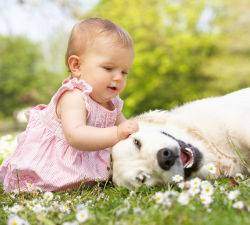 Golden Retrievers are a gentle, loving and patient breed, fantastic with children and other animals which is why they’re a firm favorite as a family dog.
Golden Retrievers are a gentle, loving and patient breed, fantastic with children and other animals which is why they’re a firm favorite as a family dog.
But it’s good practice not to leave small children and dogs alone together without adult supervision.
This is as much for the safety of the dog as for the children because a small child will often pull tails and ears, stick fingers in places they shouldn’t and use a dog as a climbing frame.
Goldens are incredibly patient and forgiving, but there’s always a line can be crossed and they may become snappy. And all this pulling and poking can harm your dog, especially a poke in the ear or the eye.
So if you have to leave your dog and small children alone together for even just 2 minutes, it’s best to pop your dog in a crate until you can give the little party your full attention.
For The Management Part Of Curing Behavior Problems
A big part of curing any behavior problem is managing the times when the behavior is usually seen.
If a dog is prevented from showing a behavior, or shown an alternative behavior to use every time, the problem behavior eventually becomes extinct and replaced by something more agreeable.
As an example, if your dog always jumps up to greet people and they get a reaction, they find this rewarding and will do it again. Part of solving this is to use every occasion they greet someone as a training opportunity to sit while saying hello.
But this takes time and not every visitor will be happy to help. For instance the postman or a pizza delivery man. But every time your dog is allowed to jump up and isn’t corrected can set your training back days or weeks.
So what you should do is use the crate as a management tool. Pop them in the crate to remove the chance of them jumping up when you cannot use the occasion as a training scenario.
Some further examples where this is useful is for begging at the dinner table and digging in the garden when unsupervised but there’s many more times besides.
To Introduce A Puppy Into The Home Of An Older Dog
A new puppy can be a bit much for an older dog to handle and you can never be sure how the first few introductions are going to go. Sometimes an older dog will be a bit aggressive and unhappy with a little boisterous, never-know-when-to-quit puppy.
So you can crate your puppy or your older dog during their first interactions while they get used to the sight and smell of one another.
Furthermore, until your new puppy and your older dog are absolutely happy together and you know they get along, you should never leave them alone unsupervised.
If you need to leave them alone you should crate your puppy so you know they’re safe, but also crate them sometimes to give your older dog a likely much needed break.
As Your Puppy Grows, You Need The Crate Less And Less
Some of the main benefits of using a crate are:
- Keep your dog safe when you cannot watch them
- Protection of your belongings
- Management of behavior problems
- To help speed up house training
All of these are predominantly puppy problems. A puppy doesn’t know what is and isn’t safe and can get into trouble. A puppy doesn’t know what they can and cannot chew. A puppy hasn’t yet learnt where they should and shouldn’t potty.
But as your Golden grows, matures and learns about the world they live in, they will stop most of the things we need to crate them for.
When your Golden reaches a stage where they stop toileting in the home and they no longer chew things they shouldn’t there’s no longer a need to crate them for these issues.
So as your dog matures and you can trust them in your home, use the crate less and less. By having worked with you in training and learning the rules of your home, they should have earned this right.
Like when a child has reached a certain age and they can be trusted not to destroy things or to hurt themselves, you no longer put them in a play pen. Give your dog the same earned reward.
With a Golden Retriever this is any time between two and three years old. Of course, allowing your Golden free roam of your home is a personal decision but it’s how I’ve always done things. A crate is not for life!
Though Eventually There’s Little Need, You Should Still Keep A Crate Anyway
Even after your dog can be trusted in your home unsupervised, you should still keep a crate for your dog to use as a place of their own, to get away from things if they choose to. Keep the crate, just rarely close the door.
And you should occasionally crate them anyway, just to keep them used to spending time in a crate because you never know when the need may arise.
For instance if they need to be boarded, travel by air, spend time at a veterinary surgery or to recuperate after an operation.
By keeping them used to spending time in a crate, you make these occasions as stress free as possible.
Conclusion
This article has shown you how to use a crate for the benefit of both you and your dog, but always with your dogs best interests at heart. It keeps them safe, keeps your belongings safe and is a useful tool to use as the management part of training.
But as a result of maturity and training your Golden will eventually know how they should behave in your home whether you’re supervising them or not. At this point you can stop using it and gift your dog the freedom they’ve earned.
Now there’s no doubt that a dog who’s allowed to roam freely around the home spending time with their family enjoys a higher quality of life, greater mental stimulation and is a happier dog.
But many puppy’s cause and get into too much trouble so it isn’t safe to grant this freedom when their owners are out of sight.
Using a crate when you cannot watch your puppy will prevent bad habits forming and by always guiding them when out of the crate you give them a far higher chance of learning how they need to behave in a world with human rules.
And they will reach the stage where they can be trusted at a far younger age and with more reliability if bad habits never form in the first place. For these reasons, I cannot recommend crate training enough.
Follow up article: A Crate Can Be Used Incorrectly
I’m going to end this article by saying that a crate can be used incorrectly, cruelly and in an inhumane way.
There are times when you shouldn’t crate your dog, some dogs that should never be crated at all and there are even some owners guilty of overusing the crate.
I will discuss all this in my next article: How not to use a dog crate and when you shouldn’t crate your dog, due for publishing in a weeks time.
A Complete Guide To Crate Training From Totally Goldens
For more information on crate training, please see our articles linked to below.
In time, this series will become the ultimate guide to crate training and will contain everything a Golden owner needs to know on the subject.
- The Benefits Of Crate Training A Dog Or Puppy
- Is Crate Training Cruel?
- How To Use A Dog Crate: When Should You Crate Your Dog?
- Crate Training: Times When You SHOULD NOT Crate Your Dog
- What Size Dog Crate Do You Need? Which Type Is Best?
- What Should You Put In A Dog Crate And Where To Put It?
- Crate Training Your Puppy Or Dog: A Step-By-Step Guide

